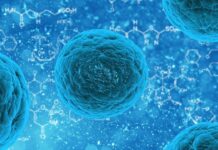In the quest for more effective treatments against a myriad of diseases, scientists are constantly exploring the inner workings of our cells. A recent discovery by researchers at the forefront of this endeavor — based at the University of Toronto‘s Donnelly Centre for Cellular and Biomolecular Research under the leadership of Dr. Mikko Taipale — has illuminated a promising avenue in drug development: targeting protein degradation (TPD) and stabilization (TBS) to enhance the efficacy of therapies.
Traditionally, TPD involves an interaction between a target protein and enzymes called E3 ubiquitin ligases. These E3 ubiquitin ligases act like markers, attaching a small protein called ubiquitin onto specific targets. When proteins have ubiquitin attached, it signals the cell to break them down, which is important for getting rid of harmful proteins linked to diseases like cancer.
On the other hand, TPS uses enzymes called deubiquitinases (DUBs). These enzymes do the opposite of E3 ubiquitin ligases – they remove ubiquitin from proteins, helping to stabilize them. This offers a new way to slow down or even stop the progression of diseases.
The innovative method developed by Taipale’s team involves probing the complete set of proteins in the human body for “effector” proteins, which can influence the stability of other proteins through induced proximity. Essentially, the researchers aimed to manipulate cellular processes for therapeutic purposes — a strategy with far-reaching implications. Their results were published in Nature.
They also introduced a synthetic platform for exploring all the proteins within a cell to find even more potential targets. This approach allows scientists to continually discover new proteins that could be important for designing effective therapeutic strategies.
Furthermore, the study sheds light on the functional nuances within critical protein families that govern protein balance in the body, providing valuable insights that could revolutionize therapeutic strategies. By establishing a comprehensive catalogue of functional effectors, researchers now have a roadmap for prioritizing targets and developing targeted therapies tailored to individual patients.
This research not only deepens our understanding of the intricate molecular mechanisms underlying diseases but also opens doors to a new era in drug discovery. By embracing unbiased approaches and exploring the full potential of the human proteome, scientists are poised to unlock novel therapeutic strategies that could transform the landscape of medicine.






































